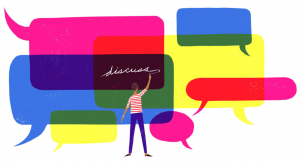
This past week I attended an ICAGile: Agile Team Facilitation course to improve my facilitation skills and, in turn, better enable my team for success. As you’d expect, attendance options were limited and I was hesitant about virtual training for these type of skills. This last year alone has emphasised just how important non-verbal communication is for a Delivery Manager (anyone else feel like they’re working with one arm tied behind their back?). And, yes, virtual training has its drawbacks but there’s one huge advantage I hadn’t considered, I can now learn with people all over the world.
I was fortunate to learn alongside ‘agile-siblings’ in Asia, Europe and North America, all of whom brought their unique experiences to the course. Rather than dwell on what I lost, I’ve focused instead on the massive gain of perspectives, challenges and lessons from outside my usual Anglo-centric, South-East England, training cohorts. Even when things ‘go back to normal’, I’ll certainly consider this trade off when choosing training and would encourage others to do so as well.
I really enjoyed the course and I am certain the skills, tools and techniques I learned will help both me and my team become more effective in our efforts. As such, I wanted to share a few nuggets of facilitation wisdom that really resonated:
Silence is awkward, get used to it
As a facilitator/coach you need to be comfortable with silence. I am clearly not wired that way, so this pearl of wisdom had the biggest impact. I tend to step into silence by offering help or further explanation sooner than I probably should. It comes from the right place but, ultimately, that’s trying to ‘help’, which isn’t always as powerful or beneficial as ‘enabling’. Some people just need time to digest the information and formulate their answers. Make it clear to your participants (and yourself) that it’s OK to take your time.
Be interested, not interesting
A good tip is if you’re talking more than 20% of the time you’re probably not just facilitating anymore. While it’s obvious to state “it’s not all about you”, the phrase succinctly encourages you to adopt a ‘facilitator’s stance’ and not draw attention away from the task at hand, even inadvertently. Remain neutral, but also bring a sense of ‘curiosity and wonder’ to the process without becoming the focus. As a facilitator you’re there to enable the participants to leverage their experience and ideas, not yours.
Don’t answer their questions, question their answers
The curiosity and wonder you bring is in the form of asking powerful questions. Again, the participants need to use their own experience and expertise so it’s your job to draw that out. Seek to learn more about how they reached conclusions, challenge their assumptions and encourage broader thinking. Keep the questions ‘open’ with no right answer in mind. For example, you could try
- What would be your approach?
- How will you know it’s working?
- What if that blocker were removed?
And, if you can, try to avoid using ‘why’ for these questions as it can sometimes sound critical.
I look forward to applying this wisdom as well as the other tools/techniques in my upcoming projects. I’ll let you know how it goes. If you give any of this a try, please let me know how you get on and feel free to share some wisdom of your own.
1 comment
Comment by Ed W posted on
Really good blog Greg, thanks for sharing! Loads of really good stuff here I'm going to take on board, particularly like the tip of the facilitator not talking more than 20%